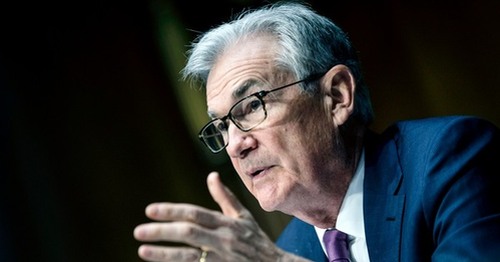
Federal Reserve chair Jerome Powell sees inflation battle lasting 'some time,' warns of economic pain
JACKSON HOLE, Wyo. — The U.S. economy will need tight monetary policy “for some time” before inflation is under control, Federal Reserve Chair Jerome Powell said on Friday in remarks that warned of slower growth, a weaker job market and “some pain” for households and businesses.
“Reducing inflation is likely to require a sustained period of below-trend growth. Moreover, there will very likely be some softening of labor market conditions. While higher interest rates, slower growth, and softer labor market conditions will bring down inflation, they will also bring some pain to households and businesses,” Powell said in a speech kicking off the Jackson Hole central banking conference in Wyoming.
“These are the unfortunate costs of reducing inflation. But a failure to restore price stability would mean far greater pain.”
As that pain increases, Powell said, people should not expect the Fed to dial back its monetary policy quickly until the inflation problem is fixed.
Some investors anticipate the Fed will flinch if unemployment rises too fast, with some even penciling in interest rate cuts next year, an outlook U.S. central bank officials have leaned hard against in recent weeks.
To the contrary, some policymakers have indicated that even a recession would not dissuade them if inflation is not convincingly heading back to the Fed’s 2% target. Powell gave no indication on Friday of how high interest rates might rise before the Fed is finished, only that they will go as high as needed.
“The historical record cautions strongly against prematurely loosening policy,” Powell said. “We must keep at it until the job is done. History shows that the employment costs of bringing down inflation are likely to increase with delay.”
Underscoring the same “raise-and-hold” message, Atlanta Fed President Raphael Bostic told Bloomberg TV that once the central bank’s policy rate is 100 to 125 basis points higher than the current 2.25%-2.50% range, “we should stay there for a long time.”
Bond markets appeared to take to heart the remarks signaling a higher-for-longer interest rate path, with traders beefing up bets on a third straight 75-basis-point rate hike at the Sept. 20-21 policy meeting and pricing in expectations the policy rate will get to the 3.75%-4.00% range by next March.
Powell’s frank acknowledgment of coming pain to households “took investors by surprise and hammers home how serious they are about raising rates to fight inflation,” said Ryan Detrick, chief market strategist at Carson Group. “The hope of a dovish pivot was squashed, at least for now.”
But rate futures trading continued to reflect expectations for such a pivot later next year, with the Fed seen cutting its policy rate by about 40 basis points by the end of 2023.
Incoming data
Powell did not hint at what the Fed might do at its policy meeting next month, except to say it would depend on the “totality” of the data by that time.
Recent data have shown some small decline in inflation, with the Fed’s closely watched personal consumption expenditures price index falling in July to 6.3% on an annual basis, from 6.8% in June. Inflation expectations based on the University of Michigan’s measures also eased in July. read more
But “a single month’s improvement falls far short of what the Committee will need to see before we are confident that inflation is moving down,” Powell said, referring to the central bank’s policy-setting Federal Open Market Committee.
Other statistics have shown what Powell said was “strong underlying momentum,” with the job market “clearly out of balance” given job openings are far in excess of the number of unemployed.
The decision of how much to increase rates “will depend on the totality of the incoming data and the evolving outlook,” Powell said, with further jobs and inflation reports to come.
The Fed has become increasingly open that its policies may lead to a rise in the U.S. unemployment rate, currently at 3.5%, a level that has not been eclipsed in more than 50 years.
To quell inflation, though, Fed policymakers have said they need to curb demand for goods and services by raising borrowing costs and making it more costly to finance homes, cars and business investment. As the process bites, as it is beginning to do, particularly in the housing market, companies may adjust their hiring plans or even resort to layoffs.
More grounded approach
Powell delivered his speech to a roomful of international policymakers and economists gathered at a mountain lodge to discuss how the COVID-19 pandemic put new constraints on the world economy, and the implications of that for central banks.
Inflation is now their chief concern, and Powell’s remarks at the symposium, hosted by the Kansas City Fed, set a tone likely to register on global markets. It was also a message major central banks are preaching in unison that rate hikes are meant to slow economies, and a commitment that won’t waiver until inflation falls.
In prior appearances at the Jackson Hole conference, Powell’s remarks have involved high-level discussions of Fed strategy and analysis.
He acknowledged that in his opening remarks. But with the Fed trying to keep markets and the general public apprised of what is coming in the future, he said the intensity of the moment required a more grounded approach.
“Today, my remarks will be shorter, my focus narrower, and my message more direct,” Powell said.






